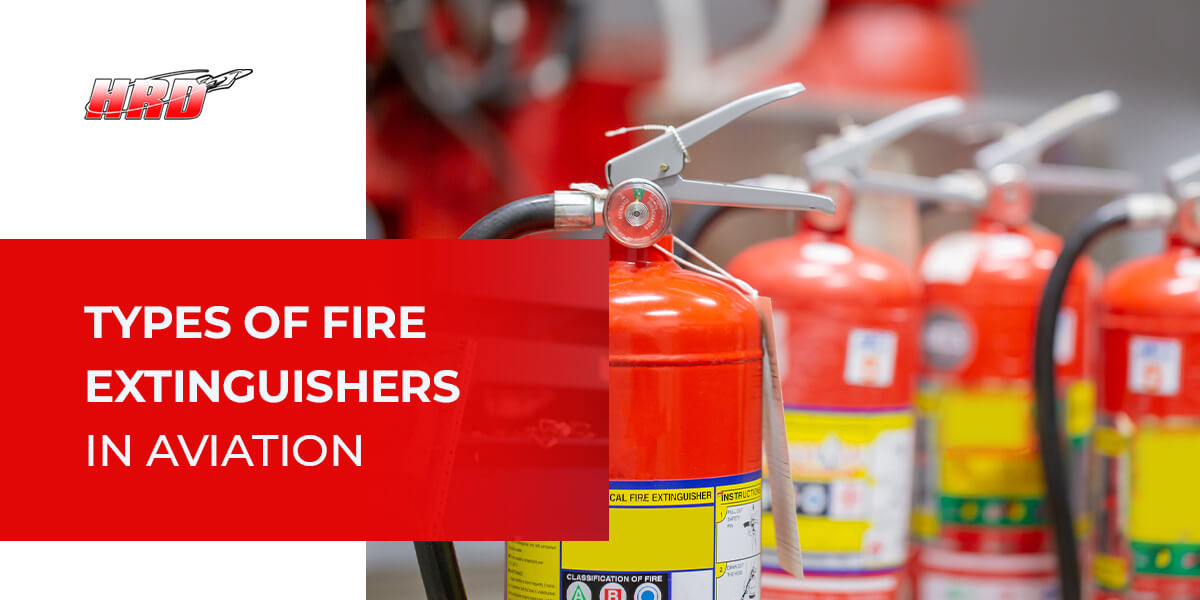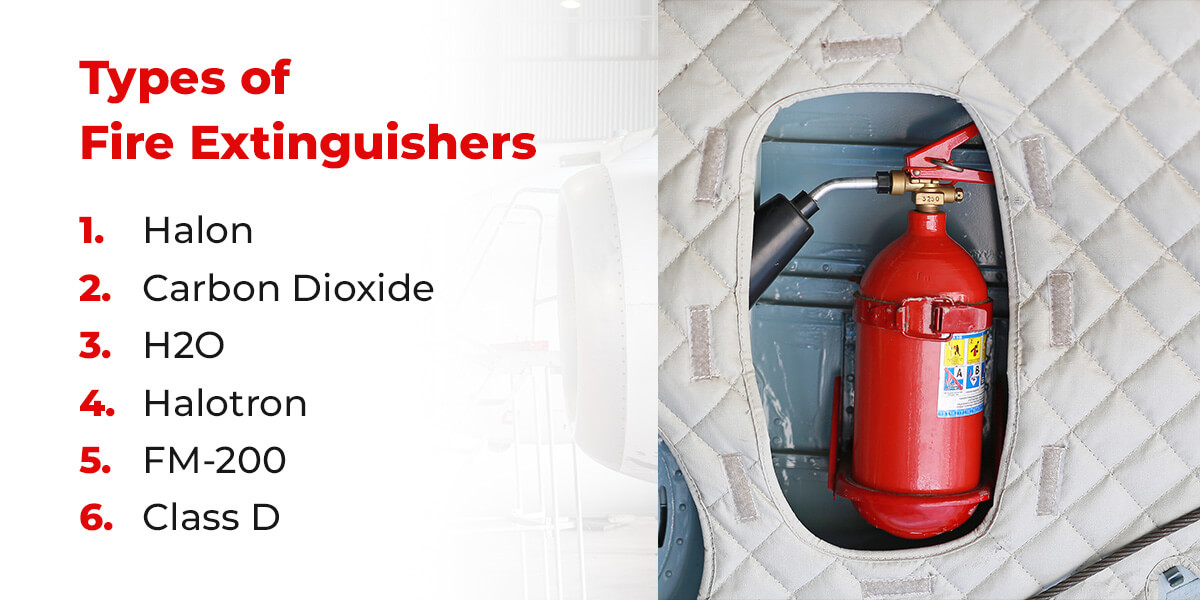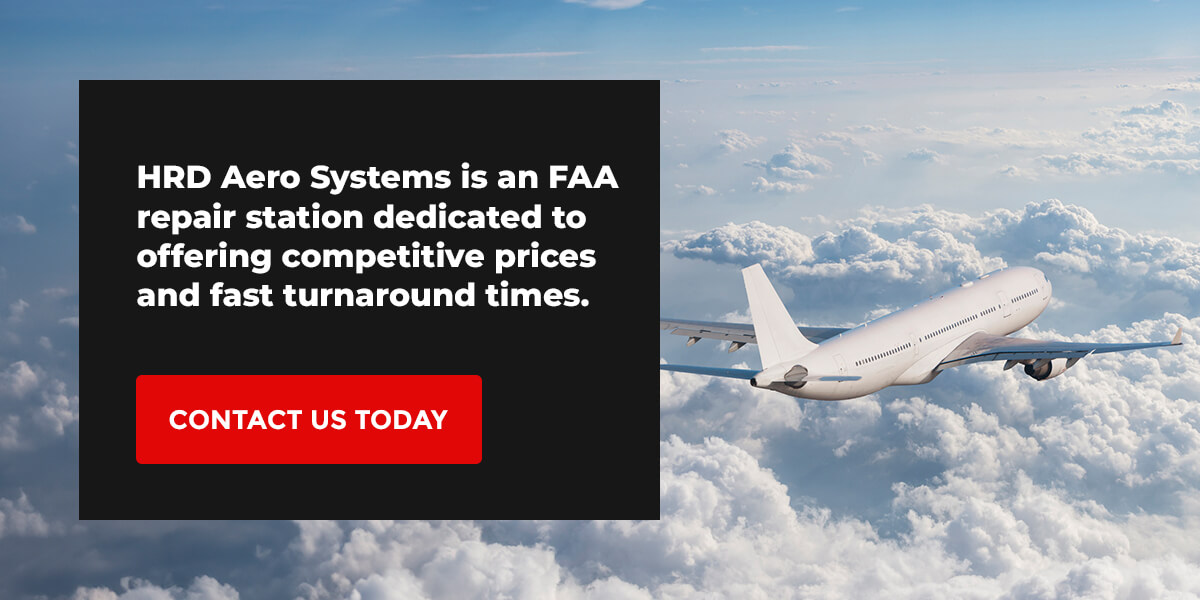
Understanding fire extinguisher limitations and requirements for aviation is crucial. Aircraft require specific extinguishers for different types of fires. Having the right extinguishers on board and in your hangar or airport helps you combat fires without corroding your aircraft’s components if a fire does occur.
Special aviation-approved extinguishers use agents such as carbon dioxide (CO2), halotron or FM-200 to replace the corrosive agents found in ABC extinguishers and the environmentally damaging chemicals in halon fire extinguishers.
Importance of Fire Extinguishers in Aviation
Having the right fire extinguishers in and around your aircraft is crucial. Certain types of extinguishers are approved specifically for aircraft use and different types of fires, so you should understand where to store and when to use each type. Storing the proper extinguishers in your aircraft and airport or hangar enables you to combat fires without damaging your aircraft or harming your crew and passengers.
Types of Fires
Typical ABC fire extinguishers you find in hardware stores are not safe for aircraft use because they can damage an aircraft’s components and temporarily blind flight crews. Aviation-approved extinguishers replace traditional ABC extinguishers to put out the following types of fires:
Class A
Class A fires involve common combustible materials such as wood, plastics, paper or textiles. The appropriate type of aviation extinguisher for a class A fire uses water to cool the fuel source and stop it from feeding the fire. Class A fires can originate from cargo compartments or aircraft furniture. Instead of an ABC extinguisher, you can opt for a halotron extinguisher to handle this type of fire.
Class B
Class B fires occur due to flammable liquids such as the following:
- Aviation fuel
- Grease
- Oil
- Gasoline
Carbon dioxide is a dry agent that can safely smother a class B fire without damaging aircraft. CO2 prevents flames from spreading and reduces re-ignition risk.
Class C
A class C fire extinguisher uses non-conductive agents to extinguish electrical fires. Class C fires occur due to complications with electrical equipment such as electronic devices, panels and wiring, and they can occur in an aircraft’s cabin systems or avionics areas. CO2, halotron and FM-200 extinguishers replace traditional ABC extinguishers in avionics applications. They can suppress fires without damaging an aircraft’s electrical components.
Class D
Combustible metals such as lithium, zinc, titanium, potassium, zirconium and magnesium can cause class D fires. While class D fires are rare in aviation, it’s important to keep a specialized class D extinguisher on board to handle this type of emergency.
Types of Fire Extinguishers
Avoiding ABC or all-purpose, dry-chemical fire extinguishers around aluminum aircraft and equipment is crucial because dry-chemical extinguishing agents can significantly corrode components. Instead, you can add the following types of extinguishers to your aircraft, hangar or airport:
Halon
Halon is the most common type of aviation-approved fire extinguisher, but due to their effect on the environment, they are slowly being phased with a goal to be out of production by the year 2040 per the Montreal Protocol.
Halon fire extinguishers put fires out using halon gas, which is a chemical substance consisting of chlorine, fluorine, iodine and bromine. This substance can successfully interrupt a fire’s combustion, but it also damages the earth’s ozone layer. It’s banned in some countries to prevent or slow the effects of global warming, but it is still permitted in aviation due to the industry’s specific safety requirements.
There are two primary types of halon, 1301 bromotrifluoromethane and 1211 bromochlorodifluoromethane. Halon 1301 is primarily used for engine, auxiliary power unit (APU) and cargo type fire extinguishers, whereas 1211 is used for handheld portable fire extinguishers.
Halon 2402 dibromotetrafluoroethane, is another type of halon used in portable fire extinguishers commonly found in Japan, Russia and China.
Carbon Dioxide
Carbon dioxide fire extinguishers are common aviation-approved fire extinguishers, and they are appropriate for hangar and airport use. You should never use a CO2 extinguisher in a small space, such as a cockpit, because inhaling it is dangerous. Additionally, a CO2 extinguisher can expel pieces of dry ice through its horn, which are also unsafe to inhale or come in contact with.
Manufacturers design carbon dioxide fire extinguishers to handle class B and C fires. You should keep a CO2 extinguisher in your hangar or airport in case an electrical or flammable liquid fire occurs. A CO2 extinguisher is especially important if an engine fire or fuel spill occurs.
A carbon dioxide extinguisher contains non-flammable CO2 under high pressure, and it lacks a pressure gauge. The CO2 displaces oxygen and cools fuel to put fires out.
You should avoid using a CO2 extinguisher on a class A fire because it typically doesn’t displace enough oxygen for this type of fire, causing class A materials to smolder and re-ignite.
H2O
Hydrogen dioxide (H2O) extinguishers use pressurized air and water to combat fires. An H2O extinguisher is appropriate for class A fires involving common combustible materials such as plastics, wood, textiles and paper.
Halotron
Halotron is a clean fire extinguishing agent and a safer alternative to halon for extinguishing class A, B and C fires. A halotron extinguisher such as a halotron BrX discharges a liquid that rapidly evaporates and its throw length is between 6 and 45 feet. Unlike dry chemical ABC extinguishers, halotron puts fires out without leaving a residue behind, inflicting minimal damage on aircraft parts and equipment.
Due to the effectiveness of halotron vs. halon, it has not yet replaced halon 1301 fire extinguishers. This will require more agent to match halon’s effectivity, which will require a redesign of the fire extinguisher and potentially the mounting brackets inside the aircraft.
FM-200
FM-200 is another clean fire-suppressing agent. This halon alternative can combat class C fires without damaging electrical components, and it’s safer to use in occupied spaces than a CO2 extinguisher. Since CO2 is dangerous to inhale, it’s best to keep an FM-200 extinguisher in areas of your aircraft that often hold passengers or crew members.
Class D
A class D fire extinguisher combats fire involving combustible metals using a dry powder, which is different from the dry chemicals found in ABC extinguishers. Class D extinguishers use a non-combustible, non-abrasive combination of sodium chloride and additives.
Aircraft Fire Extinguisher Requirements
The Federal Aviation Administration (FAA) fire extinguisher requirements determine if an extinguisher is appropriate to use in and around an aircraft. Meeting the following requirements helps you remain compliant with FAA regulations:
- All extinguishers must have approval from Underwriters Laboratories Inc. before you add them to your aircraft.
- An extinguisher should weigh 2.5 pounds or more for use in occupied aircraft spaces.
- Extinguishers must have a minimum 5B:C rating, which means they have an 8-second or longer discharge time, a 10-foot or greater range and can be fitted with a discharge hose.
While halon extinguishers are still permitted in aviation, Montreal protocol requires aircraft crews to eventually replace them with halon alternatives.
Ensure Your Facility’s Safety With HRD Aero Systems’ Fire Extinguisher Testing Services
You must store aviation-approved fire extinguishers in your aircraft and hangar or airport to prepare for potential emergencies. Halon, CO2, halotron, FM-200 and class D extinguishers replace corrosive ABC and environmentally unsafe halon models so you can combat fires without harming people, your aircraft or the environment. HRD Aero Systems offers fire extinguisher testing and overhaul services to ensure your extinguishers are in top condition and working order.
HRD Aero Systems is an FAA repair station dedicated to offering competitive prices and fast turnaround times. We can inspect and approve your extinguishers for safe use quickly and efficiently, helping you keep your aircraft in top condition for safe operation. Contact HRD Aero Systems to learn more about our services and schedule fire extinguisher testing.


